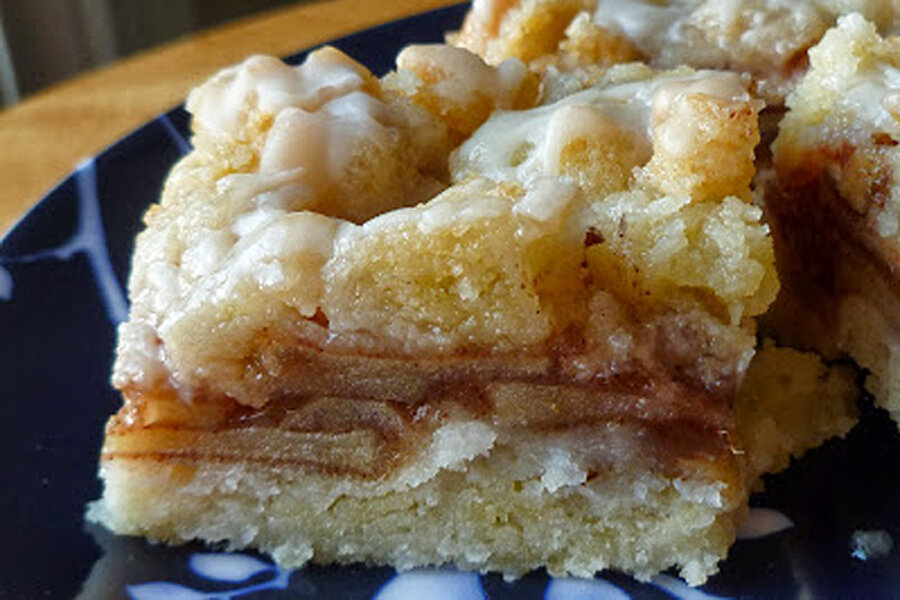By Carol Ramos, The Pastry Chef's Baking
From Lovin' from the Oven
Sweet pastry
2 cups flour
1/2 cup sugar
1/2 teaspoon baking powder
1/2 teaspoon salt
1 cup butter, softened
1 egg, beaten
Apple filling
1/2 cup white sugar
1/4 cup flour
2 teaspoons cinnamon
4 cups (about 3 medium) sliced, peeled baking apples (I used 3 large Granny Smith apples)
Glaze
2 cups powdered sugar
About 3 tablespoons whole milk
1 teaspoon vanilla extract
1. To prepare crust, mix flour, sugar, salt, and baking powder in a medium bowl. Cut in butter with a pastry blender or two knives until you have pea-sized crumbles. Gently mix in beaten egg.
2. Spray a 9- by 13-inch baking dish (I used a 9- by 9-inch) with nonstick cooking spray. Gently pat about 2/3 of the crumb mixture onto the bottom of the dish. Preheat oven to 350 degrees F., and set pan aside.
3. To prepare apple filling, combine flour, sugar, and cinnamon. Toss with apples and spread apples out on prepared crust. Sprinkle reserved crust mixture over apples evenly and bake in preheated oven for 40 minutes (mine took just less than 50 minutes). When finished, allow to cool completely.
4. To prepare glaze, whisk together powdered sugar, vanilla extract, and enough milk to achieve desired consistency. Place glaze in a Ziploc bag and cut off a very small portion of one of the corners. Drizzle glaze over cooled pastry and allow to harden (you can place it in the freezer to hurry things along). Cut into bars and serve.
Read the full post on Stir It Up!








